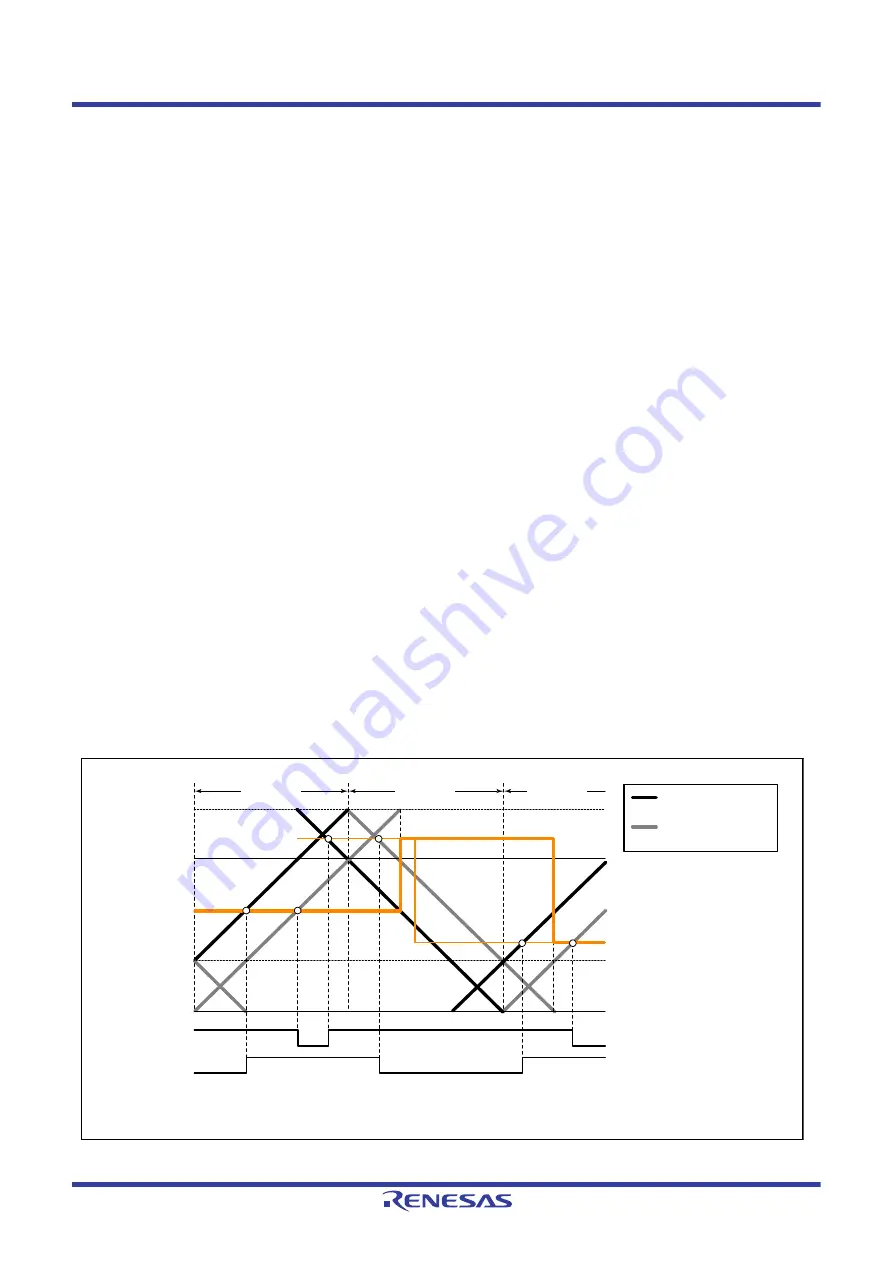
R01UH0823EJ0100 Rev.1.00
Page 561 of 1823
Jul 31, 2019
RX23W Group
23. Multi-Function Timer Pulse Unit 2 (MTU2a)
(j)
Method for Generating PWM Output in Complementary PWM Mode
In complementary PWM mode, six phases (three positive and three negative) of PWM waveforms can be output. Dead
time can be set for PWM waveforms to be output.
A PWM waveform is generated by output of the level selected in the timer output control register in the event of a
compare match between a counter and a compare register. While the TCNTS counter is counting, the compare register
and temporary register values are simultaneously compared to generate consecutive PWM waveforms from 0 to 100%
duty cycle. The relative timing of turn-on and turn-off compare match occurrence may vary, but the compare match that
turns off each phase takes precedence to secure the dead time and ensure that the positive-phase and negative-phase turn-
on times do not overlap.
show examples of waveform generation in complementary
PWM mode.
The positive-phase and negative-phase turn-off timing is generated by a compare match with the counter indicated by a
solid line, and the turn-on timing is generated by a compare match with the counter indicated by a dotted line, which
operates with a delay equal to the dead time behind the counter indicated by a solid line. In the T1 period, compare match
a that turns off the negative phase has the highest priority, and compare matches before a are ignored. In the T2 period,
compare match c that turns off the positive phase has the highest priority, and compare matches before c are ignored.
In most cases, compare matches occur in the order a → b → c → d (or c → d → a' → b') as shown in
If compare matches deviate from the a → b → c → d order, since the time for which the negative phase is off is shorter
than twice the dead time, the positive phase is not turned on. If compare matches deviate from the c → d → a' → b' order,
since the time for which the positive phase is off is shorter than twice the dead time, the negative phase is not turned on.
As shown in
, if compare match c follows compare match a before compare match b, compare match b is
ignored and the negative phase is turned on by compare match d. This is because turning off the positive phase has higher
priority due to the occurrence of compare match c (positive-phase off timing) before compare match b (positive-phase on
timing) (consequently, the waveform does not change because the positive phase goes from off to off).
Similarly, in the example in
, turning off the negative phase has priority due to the occurrence of compare
match a’ (negative-phase off timing) before compare match d (negative-phase on timing). As a result, the negative phase
is not turned on.
Thus, in complementary PWM mode, compare matches at turn-off timings take precedence, and turn-on timing compare
matches that occur before a turn-off timing compare match are ignored.
Figure 23.46
Example of Waveform Output in Complementary PWM Mode (1)
a
b
c
a'
b'
d
MTU3.TGRA
TCDRA
TDDRA
0000h
Positive-phase
output
Negative-phase
output
Output waveform is active-low.
Buffer operation is set for transfer at the crest and trough.
MTU4.TGRA
TEMP2
ON
OFF
OFF
ON
ON
OFF
T1 interval
T2 interval
T1 interval
Counter for generating
a turn-off timing
Counter for generating
a turn-on timing















































